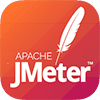Software Performance Testing
Load and Website Performance Testing Services Ensure Quality at Peak Load.
Performance Testing Services
Performance testing services are crucial for verifying that a system is stable and functions correctly under typical, sustained, and stress conditions.
The performance testing experts at QA Genesis utilize established tools to assess the performance metrics of the solution and offer a comprehensive perspective on its overall performance.
Why Do You Need Software Performance Testing?
Your application is inefficient.
You anticipate a significant increase in the number of app users.
You want to determine how your application performs under heavy load.
You want to ensure that your application is capable of promptly restarting and saving all data in the event of a failure.
You wish to compare performance between the application's previous and new versions.
You're about to go live and don't want to upset your clients with a slow app.
Let us help you identify issues before they get the better of your application.

How QA Genesis Works?
Numerous performance testing service companies conceal the entire testing process. However, we at QA Genesis are entirely transparent about the complete software testing process. Furthermore, we discuss the process we regularly conduct to keep our clients updated. Thus, during the performance testing procedure, we:
As many straightforward API requests as feasible
Create realistic phenomena that replicate the real-world user experience.
Utilize primary threads to process enormous volumes of data.
Execute tens of hundreds of API queries, either concurrently or in increasing numbers.
Ensure that servers are monitored throughout all tests.
Produce reports that contain concise information on the system's state.
Move the software to the cloud for ease of use.
Utilize external devices to produce diversified requests with a large load.
Standard Testing Process
Analyze the application's backend structure
Familiarize yourself with the procedure
Create a test scope for API queries
Simultaneously run calls in thousands of API threads
Save and analyze the outcomes of test runs
Compile performance data
Hire QA Team and Get
Insight into the behavior of your application when 100/1000/10000 users attempt to use it simultaneously.
Knowledge of the maximum number of concurrent users who can access the program without sacrificing speed or quality.
Recognize how your team should operate in the event of your application going down.
Types of Performance Testing
Parameters

Speed
The rate at which an application responds.

Adaptability
The application's maximum load capacity.

Uniformity
The application's capacity to operate smoothly under heavy load.
Can't wait to test the performance of your application?
Frameworks, Tools, And Solutions

Jmeter

Postman

Gatling

NeoLoad

Locust

BlazeMeter
Frequently Asked Questions
1.What is performance testing?
In software quality assurance, performance testing is a broad phrase that refers to the process of determining how well a system performs in terms of reactivity and durability when subjected to a specific workload.
2.Why do you need performance testing?
Performance testing is often undertaken between the end of the testing and the app's release/publication. It verifies that the system is secure and that all application components are robust in their current hardware configuration.
Suppose your application has previously been tested in the simulation model. In that case, you may want to do additional performance testing to ensure that existing users do not encounter any issues with app access during peak traffic hours.
3.What types of measurements can performance testing cover?
1. Process Load
2. Memory Load
3. I/O wait
4. Request Transfer Speed
5. Response Time
6. Throughput
7. Load Balancing
8. Latency
4.What are the benefits and drawbacks of performance testing?
Benefits—
1. Understanding how your software performs under duress
2. Knowledge of what your team should do in the event of a system failure
3. Learning about your system's ability to act quickly under duress
Drawbacks—
1. Occasionally, a system will fail during testing.
2. Your test server should be identical to your production server in terms of resources
3. Creating connected situations for testing the entire user experience might be challenging at times
5.What technologies do you use to provide a report on performance testing?
We cannot generate a detailed performance test result with a single tool. During performance testing, we examine a variety of attributes and make use of a variety of instruments. To give our clients detailed data on application inefficiencies and resolve them, we collect and evaluate the results of several performance tests and then compile them into easy-to-understand reports and graphs.
6.Can tests be run in a variety of contexts without requiring additional code?
Yes. However, we do not hardcode environment-specific variables. All of these variables will be editable via the config file.
7.What information is necessary to begin performing performance testing?
1. Access to testing environments